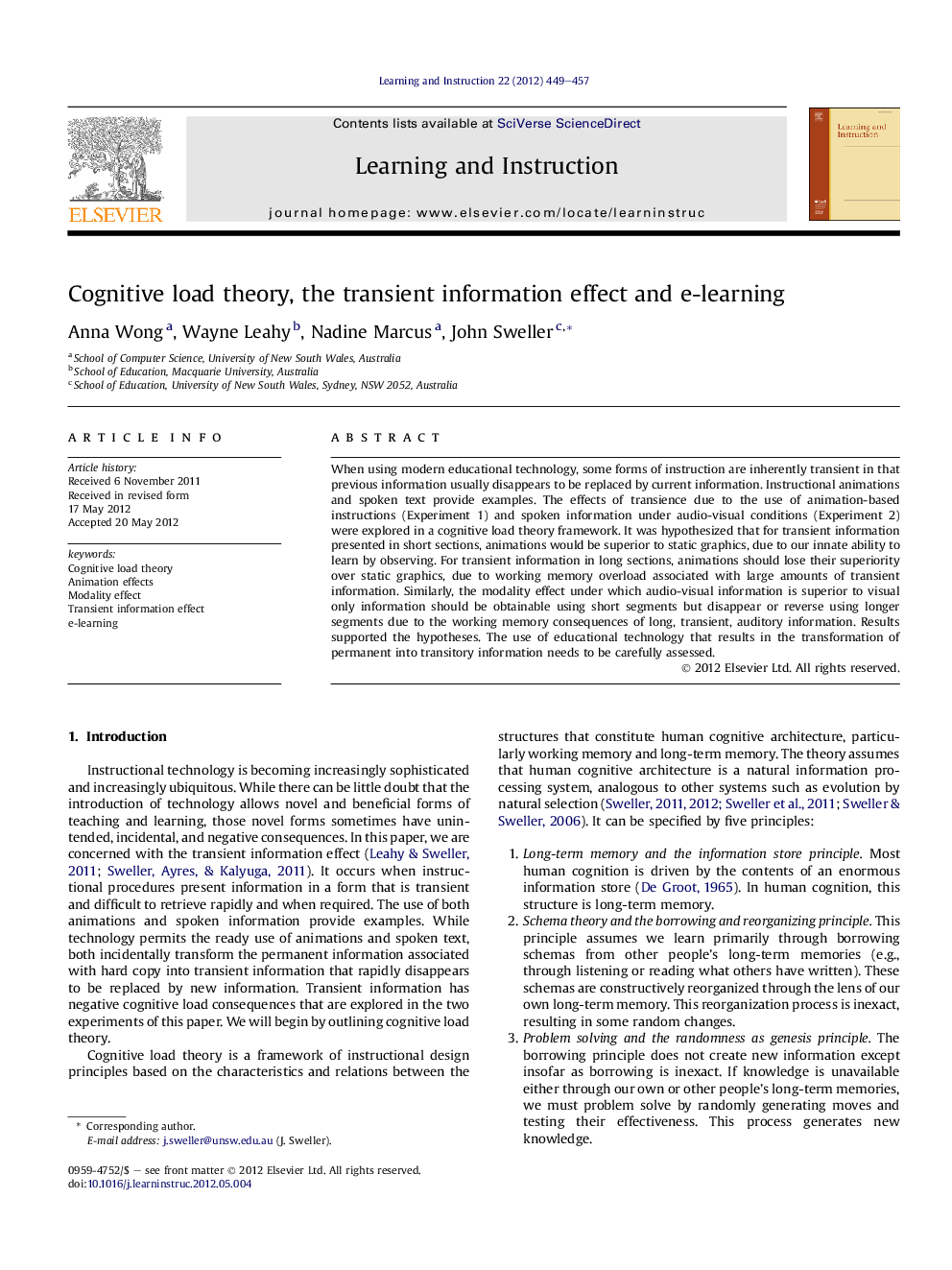| کد مقاله | کد نشریه | سال انتشار | مقاله انگلیسی | نسخه تمام متن |
|---|---|---|---|---|
| 365652 | 621213 | 2012 | 9 صفحه PDF | دانلود رایگان |

When using modern educational technology, some forms of instruction are inherently transient in that previous information usually disappears to be replaced by current information. Instructional animations and spoken text provide examples. The effects of transience due to the use of animation-based instructions (Experiment 1) and spoken information under audio-visual conditions (Experiment 2) were explored in a cognitive load theory framework. It was hypothesized that for transient information presented in short sections, animations would be superior to static graphics, due to our innate ability to learn by observing. For transient information in long sections, animations should lose their superiority over static graphics, due to working memory overload associated with large amounts of transient information. Similarly, the modality effect under which audio-visual information is superior to visual only information should be obtainable using short segments but disappear or reverse using longer segments due to the working memory consequences of long, transient, auditory information. Results supported the hypotheses. The use of educational technology that results in the transformation of permanent into transitory information needs to be carefully assessed.
► Animation effects occur when animations are better than static graphics.
► Modality effects occur when spoken is better than written text.
► Both animations and spoken text transform permanent into transient information.
► The negative effects of transience can be ameliorated by reducing segment lengths.
► Cognitive load theory predicts transient information by segment length interactions.
Journal: Learning and Instruction - Volume 22, Issue 6, December 2012, Pages 449–457